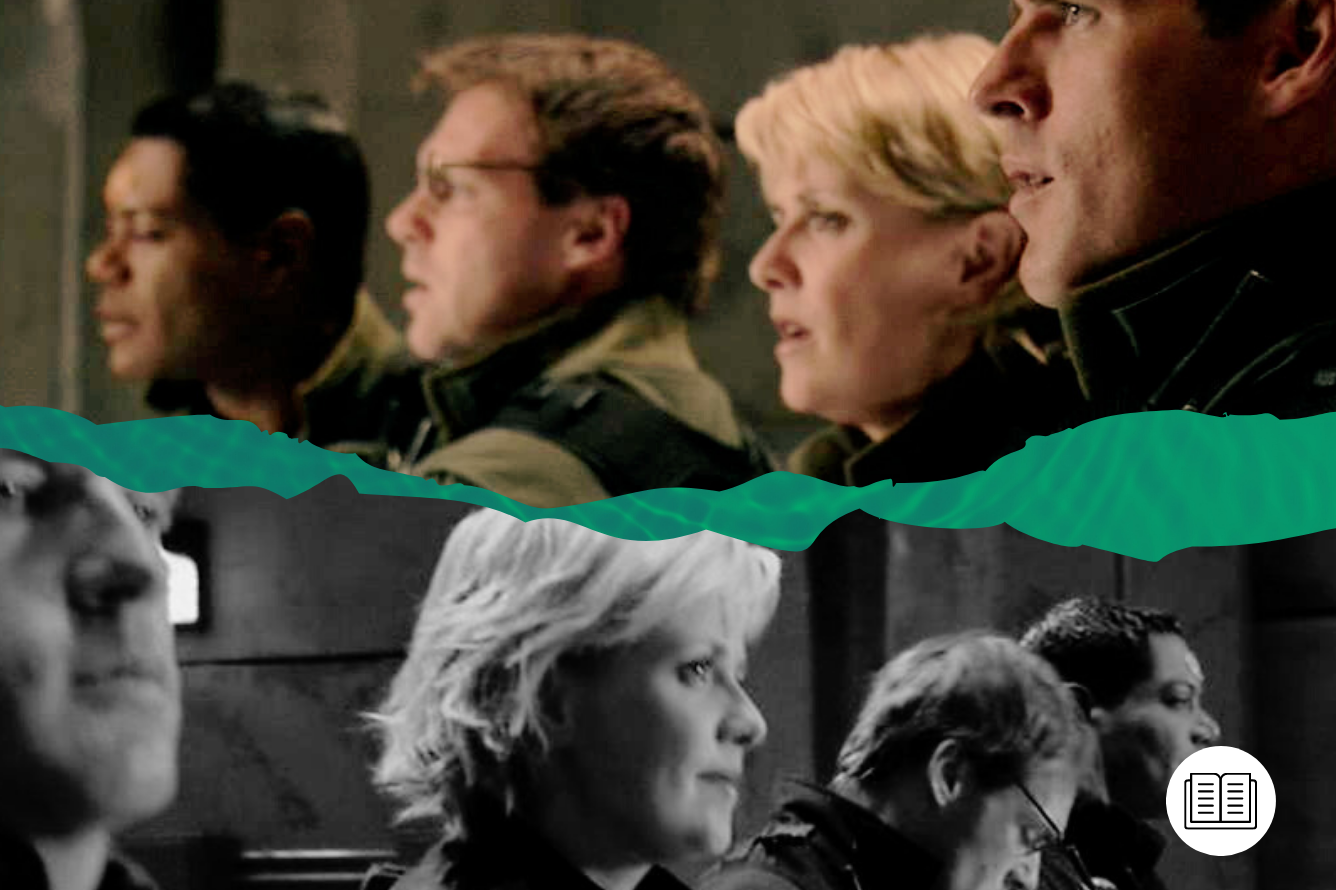By Season 9, Stargate SG-1 had gone through something of a reboot, with a raft of new cast members and Stargate Atlantis running comfortably alongside it. But Stargate being Stargate, the writers were never that far away from doing something unique. ‘Ripple Effect’ (S9, Ep13) is a fantastic mixture of action and comedy in a tale about a series of bizarro SG-1 teams coming through the gate and causing havoc (and danger).
The Companion spoke to several of the filmmakers – as well as an iconic returning cast member – about how the fan-favorite episode ‘Ripple Effect’, the multiple SG-1s from alternate universes, and the reunion with the sorely missed Dr. Janet Fraiser (Teryl Rothery) came to be.
As Told By
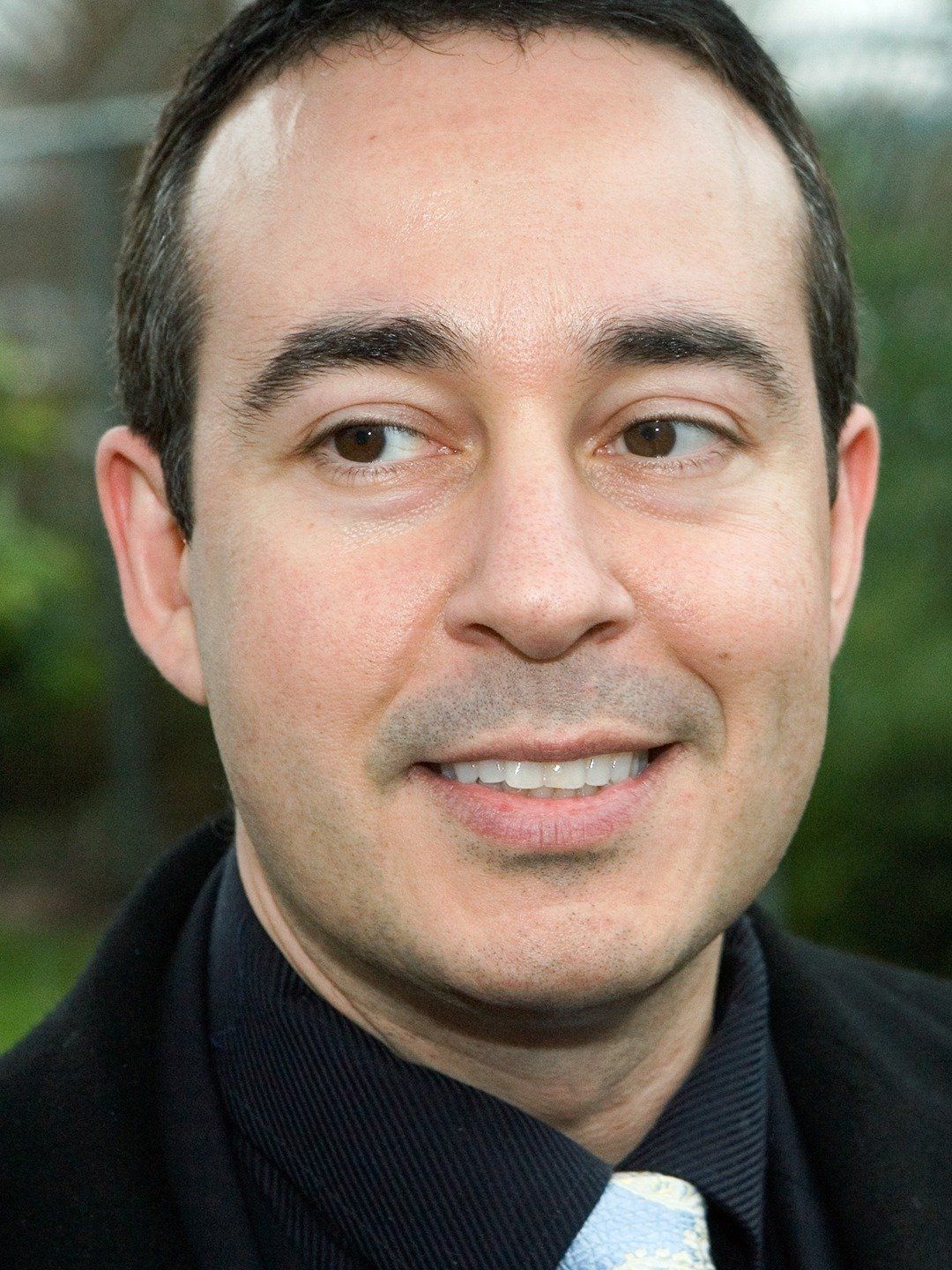


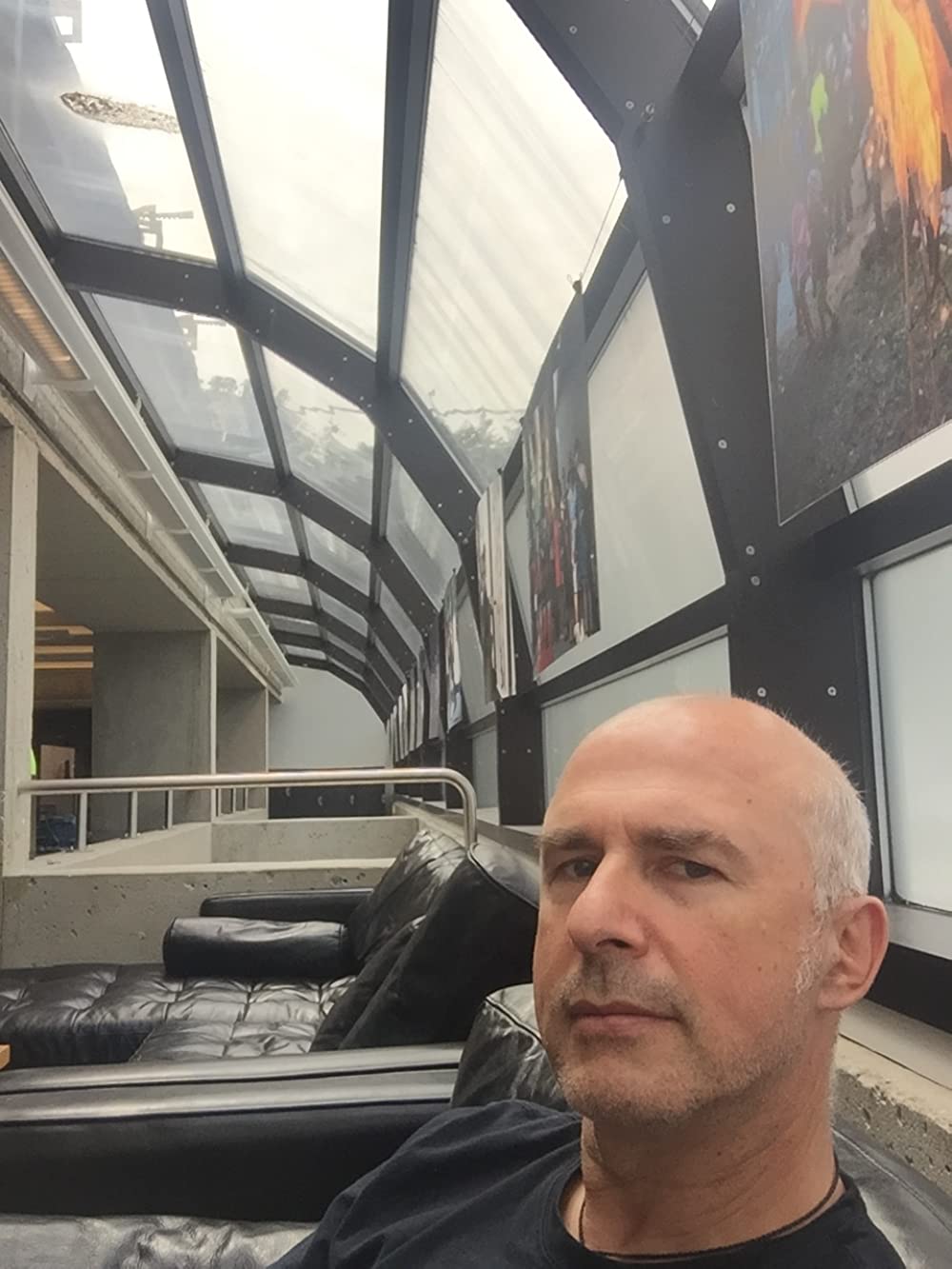
Joseph Mallozzi (co-writer/executive producer) / Teryl Rothery (actor; Dr. Janet Fraiser) / Vince Coates (assistant director) / Peter Bodnarus (art director).
Joseph Mallozzi (co-writer/exec producer): If I remember correctly, I think the kernel of the idea for this story came from one of Brad Wright’s daughters who pitched him “What if SG-1 comes through the gate…and it’s not really them?” Like many Stargate episodes, that small nugget of a notion was spun and expanded upon until it yielded a great story.
The wonderful thing about time travel and AU stories is that they allow you to travel the road not taken and, in some cases, bring back some beloved, fan favorites. Teryl’s Dr. Fraiser was very much that and I missed her as much as the fandom, so when the opportunity presented to bring her back, I took it.
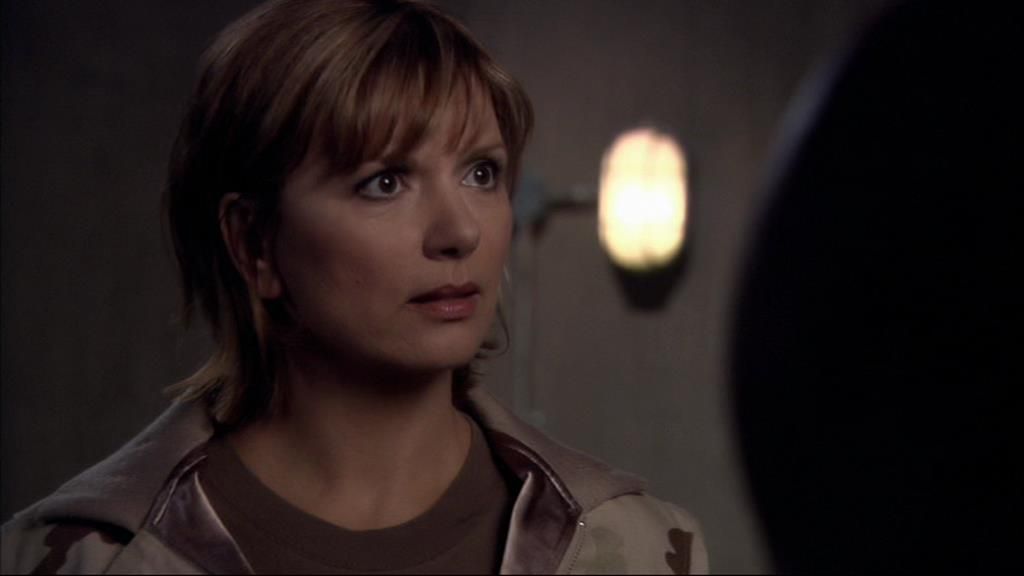
Teryl Rothery (actor; Dr. Janet Fraiser): They called saying they wanted me to come back for this episode. I was excited to do it. But I wasn’t my Janet. So there was a little bit of difference in how I played me because they weren’t my people. What helped was me going back to the set and it was a different cast. Don [S. Davis, as General Hammond] wasn’t there, and Ben Browder [as Cameron Mitchell] was. So it was just different.
It was also fun because it was like a reunion. J.R. Bourne was back too [as Martouf].
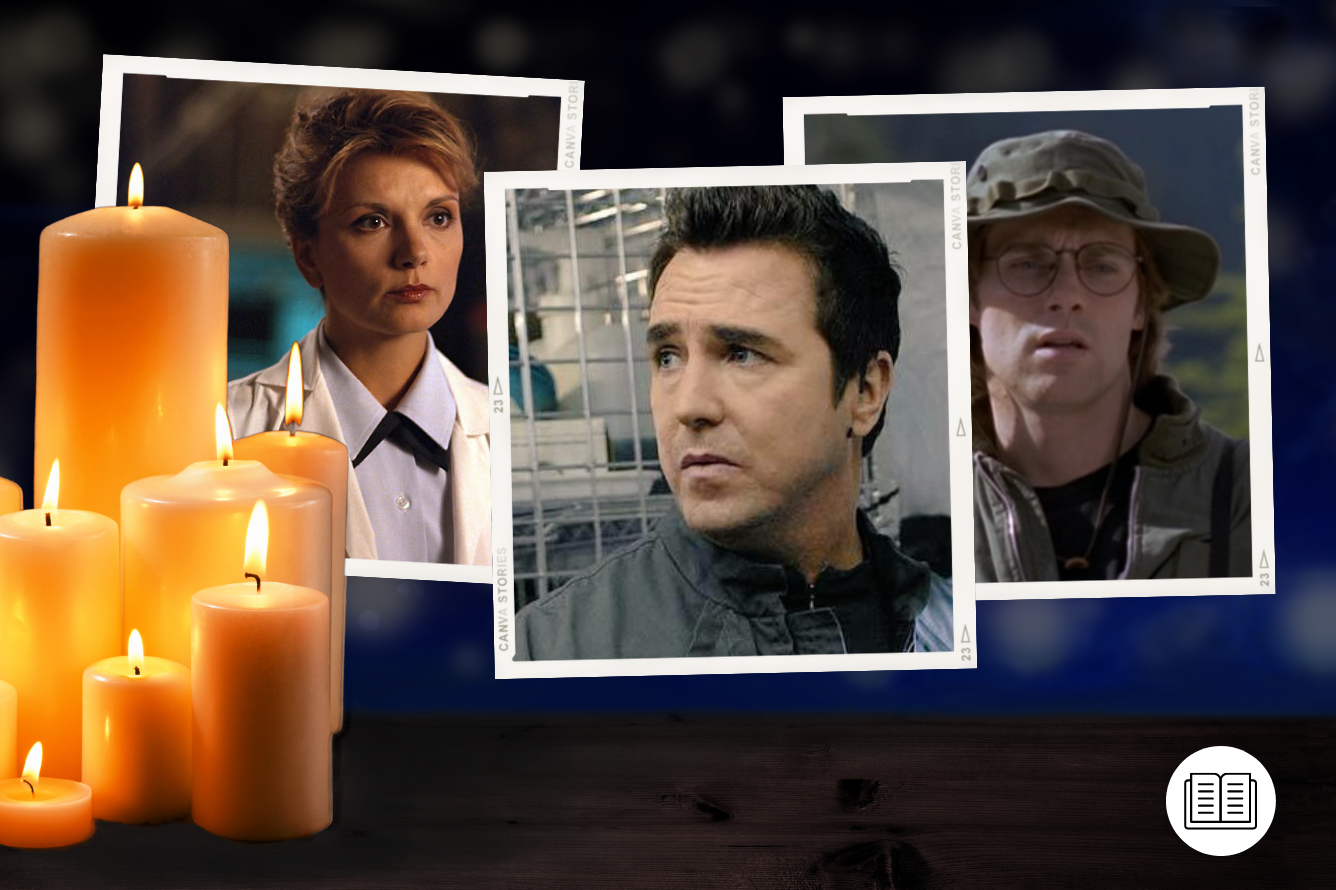
Vince Coates (assistant director): I was one of the old-school people. I worked with Don [S.] Davis, who was one of my good friends, and obviously Teryl. It was almost kind of bittersweet to see Teryl again. I know she was just an actor on the show, but she's a really, really nice person and she's a really good actor. All us old people that had been there for numerous years were really glad to have her back.
Amanda Tapping (to Stargate SG-1/Atlantis Official Magazine Yearbook 2006): We introduced a whole new dynamic to [the] show, not only in terms of new characters like Beau [Bridges], Ben [Browder], Claudia [Black], and Lexa [Doig] but also with a whole new mythology. The Goa’uld are gone, and now we are faced with this new enemy. For the writers, it’s like writing a first-season show, so you don't have as much time to focus on the interpersonal relationships of your individual characters.
There wasn’t time to show all the interpersonal relationships. Carter had to deal with Martouf. So if we had had a Carter and Fraiser scene, then we wouldn't have dealt with the story as well. But that's the one thing with ‘Ripple Effect’ that I missed.
Peter Bodnarus (art director): Season nine was my last season with Stargate. I think for Season 9, the real sort of driving idea was kind of overlapping Atlantis and our universe. A lot of the designs were around kind of using the technology of the Ancients in our world. The idea of the technology of the Ancients as being very much about crystals and the crystalline design and how that interacted with [SG-1].
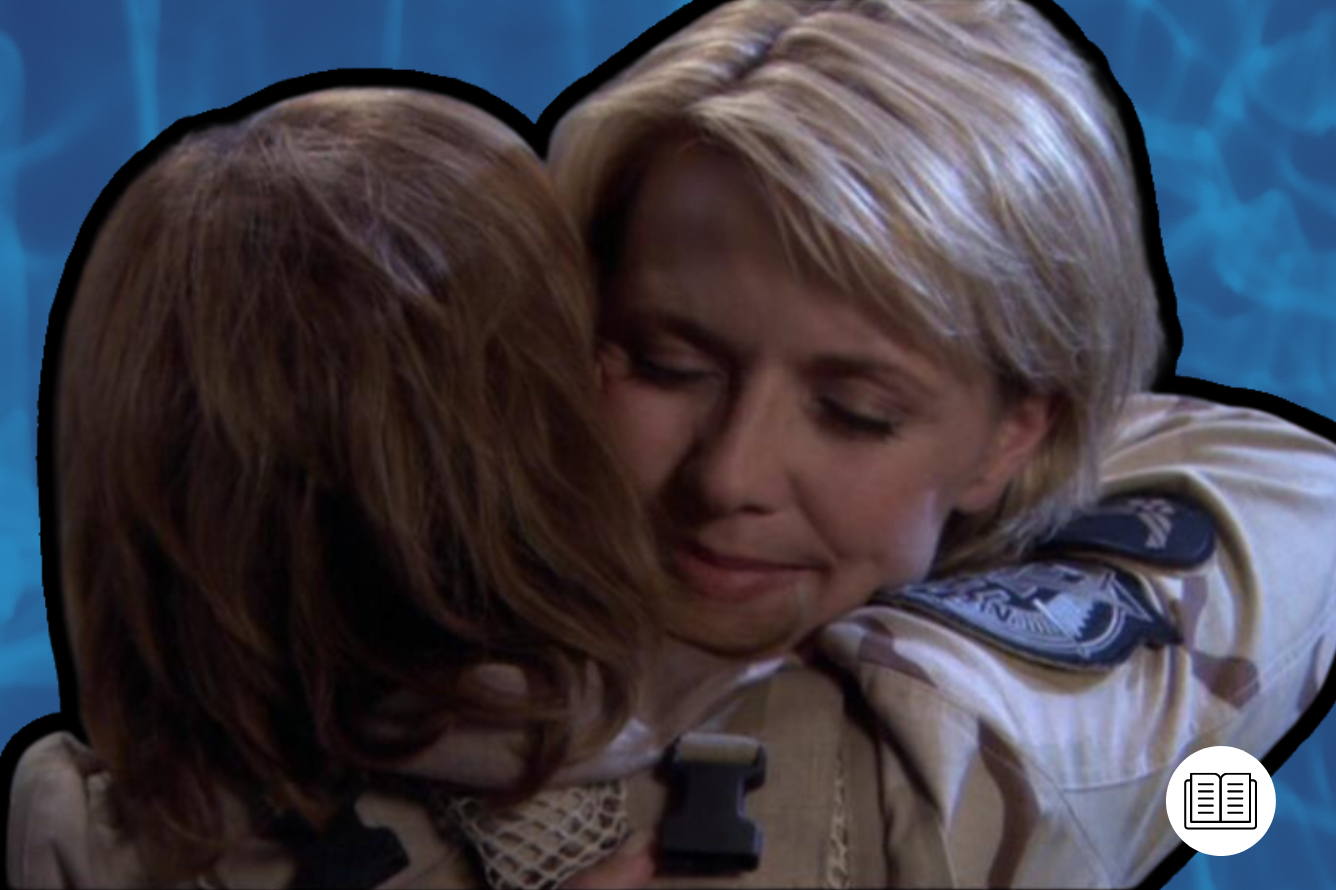
Of course, technical challenges were at the heart of an episode where you had actors playing multiple versions of their characters, often in the same scene…
Joseph Mallozzi: Unlike some time-travel tales I’ve written, there was no need for a running tally that tracked the various timelines or characters. This one was fairly straightforward. It wasn’t so much complicated as it was time-consuming. VFX involving twinning shots always were.
Vince Coates: Technically [it was] one of the hardest episodes I’d ever been a part of on Stargate. We brought in a specialized team with a computerized [camera] head where we could match the shot each time back and forth. So we could do Ben Browder talking to himself, and Amanda Tapping talking to herself. She'd go and change her costume and then the camera could specifically do the same movement over and over again. So Amanda would know, ‘Okay, I can't walk past a certain point on the floor.’ She knew to look at her own eye height because she was looking and talking to herself.
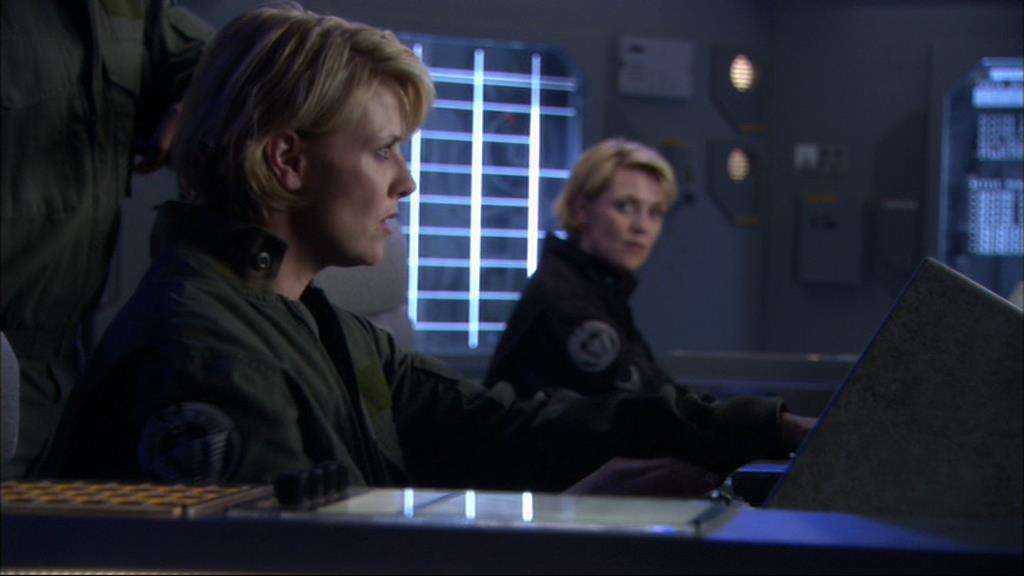
Peter Bodnarus: Digiting compositing is a lot more advanced now than it was then.
Vince Coates: I have a funny anecdote from ‘Ripple Effect’. We’re on the Prometheus. One of the Prometheus doors slides open. Ben Browder and SG-1 step through the door, being captive, held by another SG team, and you see Ben Browder on the outside of the door, standing in his underwear with his clothes, and then the door shuts and he walks away and you think, ‘What the hell? Why was Browder standing in his underwear?’
In the original script, it had everybody in their uniforms. And as you know in the episode, they kind of fake each other out. [Browder] said to the writers, ‘This isn't working for me, I could just be the other guy because I’m dressed like him.’
Joe [Mallozzi] and Paul [Mullie] were like, ‘Well what the heck are we going to do? What would you do?’ And Ben goes, ‘I don't know I’d put him in his underwear.’ True story.
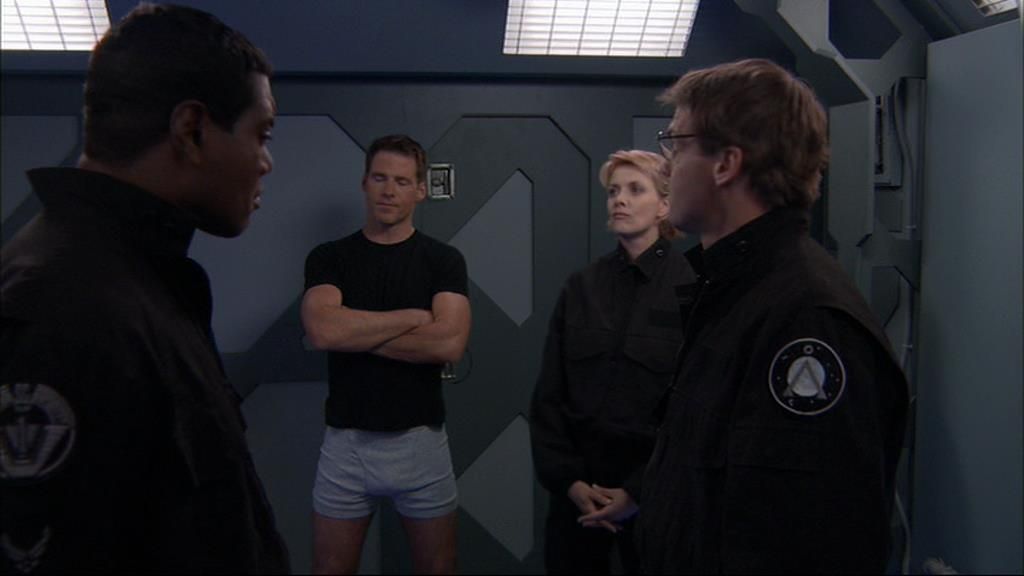
Ben Browder (to Stargate Official Magazine): I never even realized I was the naked guy…[Being in my underwear on ‘Ripple Effect’] was my choice, though. I’m thinking, if Mitchell’s getting even, he’s not giving the guy his clothes back. I said this to [director] Peter DeLuise and he goes, ‘Yeah, that’s a great idea!’ So, I’m picturing the producers watching the rushes, going, ‘Why is Ben in his underwear? Again. He must really like it, let’s write it in some more.’
Joseph Mallozzi: The most memorable aspect of this episode was the fifth-act twist that sees our original crew turn the tables on their AU counterparts. When we broke the story, we had no solution for how our team was going to escape and I assumed I would just figure it out when I wrote the outline. But when it came time to write the outline, I still hadn’t come up with a solution, so I left it a TBD [To Be Decided] and had faith in myself to come up with a clever solution at the script stage. Fortunately, I was able to do so. I don’t know how.
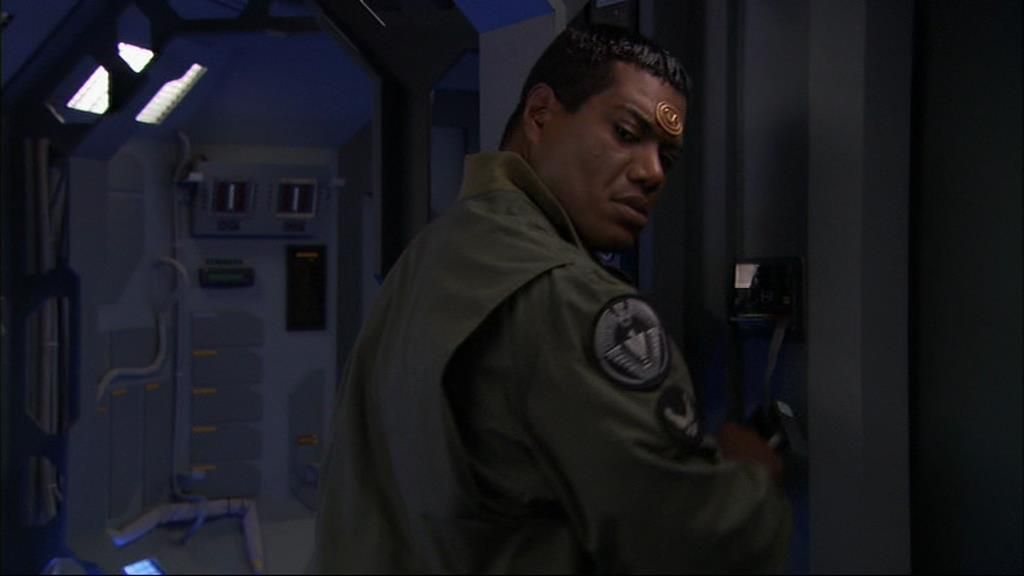
Peter Bodnarus: I was actually the art director and designer of the Prometheus. That was the one I really put my signature on when I was on Stargate. Seeing that really get used fully was great. We had designed the Prometheus interior set very specifically to be as flexible as possible, to just turn things around and use the different areas in as many different ways as possible. And it was really kind of fun watching the dailies on [‘Ripple Effect’]. I know that we took the engine room and we changed it into the commissary or the mess hall.
I think the fact there was some symmetry in a lot of the design of the set [was important too]. I think they were able to do the kind of flip frame to get the two [same] actors in the scene. That's something that we had done in the past with that set because of the symmetry of some of the spaces.
Vince Coates: We used a lot of photo doubles when we did the over-the-shoulders. Richard Dean Anderson’s stand-in would be on camera for him every Friday afternoon from about 2 p.m. until we finished filming if Richard was in any scenes because Richard would fly back to Los Angeles every Friday afternoon to go be with his family.
You wanna hear something crazy? His stand-in is a librarian. The guy is very worldly, he's an extremely nice man. His name is Bill and he was Richard’s exact height, he had the same kind of jawline, and he looked identical from the back with his haircut.

Since the episode aired on 20 January 2006, it is regularly cited as one of fans’ top 10. Luckily, its creative team remembers it fondly too even if it was Teryl Rothery’s final – final – hurrah.
Teryl Rothery: It had its sad moments because it wasn’t the same. That family was different. There was a disconnect, which fit beautifully because there was a disconnect for [the other Janet]. It’s one of the favorite chunk of years of my life doing that show.
[Coming back more permanently] would have been nice. Wow, what if there could be a different kind of Janet – an evil Janet, a sexy Janet? But I knew that was going to be it. It was a really nice gift.
Janet’s return allowed for a shape contrast with SGC’s new medical officer, Dr. Carolin Lam (Lexa Doig).
Lexa Doig (to Stargate Official Magazine): Carolyn is way out of her element for one thing. In some ways, she is the antithesis of Janet Fraiser [Teryl Rothery], who was this incredibly competent, caring, nurturing type of figure. Carolyn is probably equally competent but doesn't believe so. She's a lot colder than Janet, which was kind of tough for me...
Peter Bodnarus: Honestly, what that episode did was it gave me a bit of a break because I was doing Atlantis at the same time.
Vince Coates: I didn’t realize the show was that popular. We would have conventions in town and we would have fans lined up against a chain link fence to wait for the actors to walk by. That was kind of fun. [But] it really is a lot of work. I mean, it was a lot of fun, but we’re doing 13-hour days probably with travel and stuff.
Peter Bodnarus: Working on Stargate was a particularly unique experience for me in that Brad and the writers were readily accessible to the designers. They worked with us closely and we could get immediate feedback about what we were designing. Clearly, they’re the idea leaders, but I've never had that level of access to a producer since.
And I think that’s one of the reasons why this show is so beloved is because that energy, drawing the best out of your people, really made its way onto the screen.


